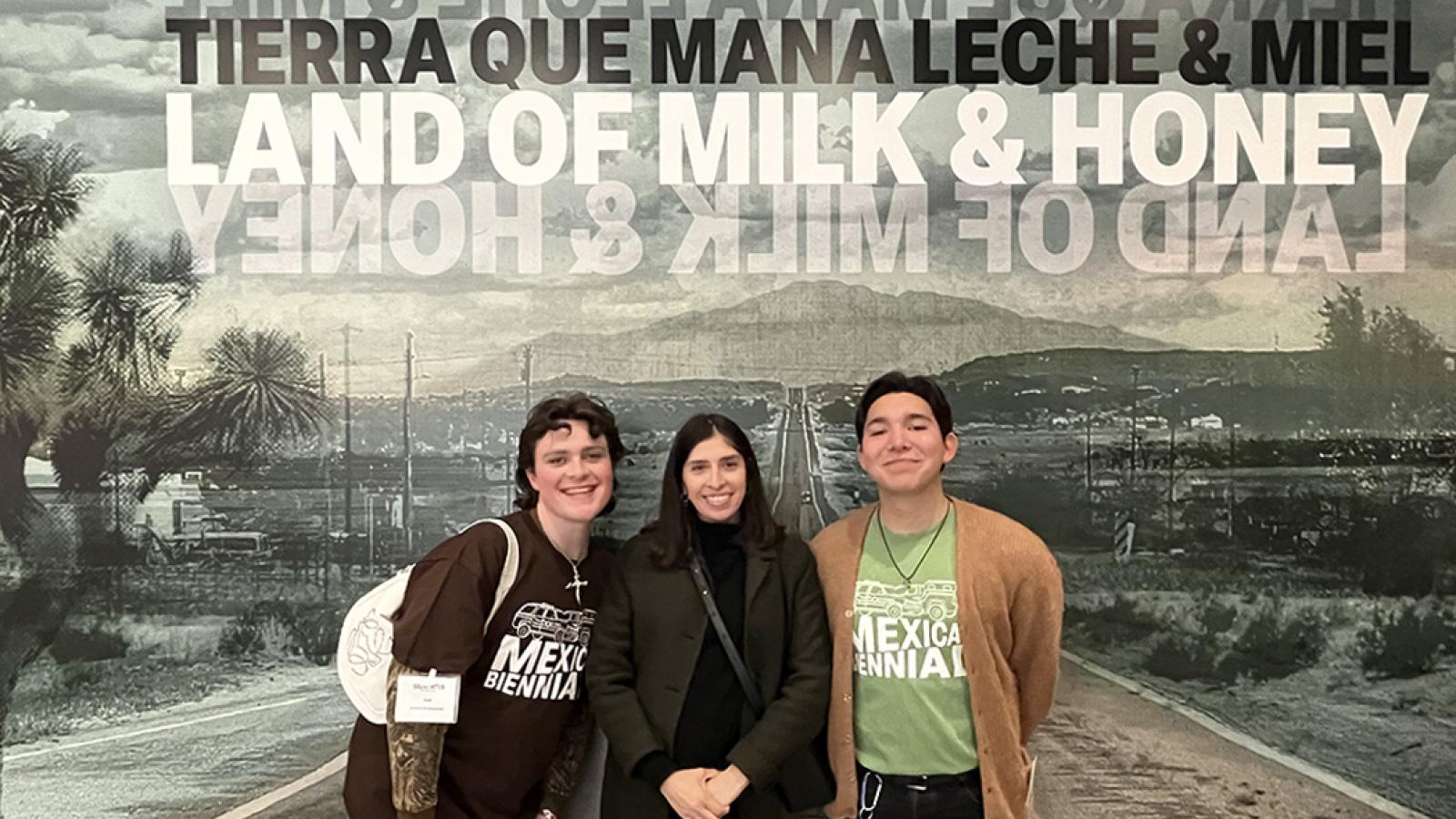The day before the Mexicali Biennial Exhibition was set to open at The Cheech Marin Center for Chicano Art & Culture, Samuel White ’23 and Daniel Velazquez ’25 labored side-by-side with Rosalia Romero, assistant professor of art history, to put the finishing touches on the show. For all of them, the opening would be a culmination of months of curatorial work and research.
Romero is an organizer for a pair of exhibitions currently showing through May 28 at The Cheech in Riverside, Calif. The first is Land of Milk & Honey (the most recent iteration of the Mexicali Biennial) which focuses on concepts of agriculture in California and Mexico. An adjacent gallery shows a corollary presentation, MexiCali Biennial: Art, Action, Exchanges, which chronicles the history of the Mexicali Biennial from 2006 to the present.
Romero is grateful for support from the Art History Department, her research startup funds and Pomona’s Summer Undergraduate Research Program to involve White and Velazquez as her research assistants.
The students’ primary task has been to conduct research with the Hispanic Reading Room of the Library of Congress to create a Story Map, an interactive, digital storytelling tool, on The Land of Milk and Honey. The Story Map uses photographs, illustrations and interviews to tell the deeper history of four pieces in the exhibition.
This research equipped White and Velazquez well to serve as docents at the museum for the exhibitions. Additionally, they also wrote wall texts, helped curate and installed the shows.
“I’m really proud of all their work,” Romero says, adding, “I see this as a way in which we can apply what we learn in the classroom and use it to serve the communities that we are a part of.”
Samuel White
White, an art history major from Houston, took an interest in border art because of his family members in El Paso, Texas, and Monterey, Mexico. He has taken four classes with Romero—all the classes she has offered—during his time at Pomona.
“Taking these courses was great for me to develop a vocabulary to talk about where my family’s from,” he says, “and to learn more about the cultural history and aesthetic production being done there.”
White hopes to attend graduate school to become a curator and credits the research experience for opening the possibility: “Doing what I did at the biennial made it seem more tangible, more achievable. I never could have imagined that I would be that engaged and entrusted with as much.”
As he graduates from Pomona this spring, he reflects, “Professor Romero has been the guiding light since I got here. I’m eternally grateful for her not just showing me what I’m interested in but allowing me to apply it and having the confidence in my ability to do it at a time when I was unsure of my own ability.”
Daniel Velazquez
Velazquez came to Pomona from Chicago as a Posse Scholar. He plans to double major in Chicana/o-Latina/o studies and sociology.
His first-year writing seminar was Southern California murals, taught by Romero. “Seeing how Professor Romero was able to bring the political side of art and connect it to social problems and movements made me really interested in art,” says Velazquez. He proceeded to enroll in her Introduction to Latin American and Latinx Art course, and after that, asked to do research with her.
Velazquez says of his research experience: “It was very rewarding and also very refreshing to be not just in the museum but a museum for people like me and working on an exhibit that’s about experiences that make me think about my family’s experiences.”
He hopes to work in museums as a career and is especially interested in archival and curatorial work. The idea of presenting research via an exhibition (versus through, say, a paper) appeals to Velazquez.
“While I love that I would be researching and studying and probably teaching, you can do both; Professor Romero is a professor and is also doing museum work,” Velazquez says.
